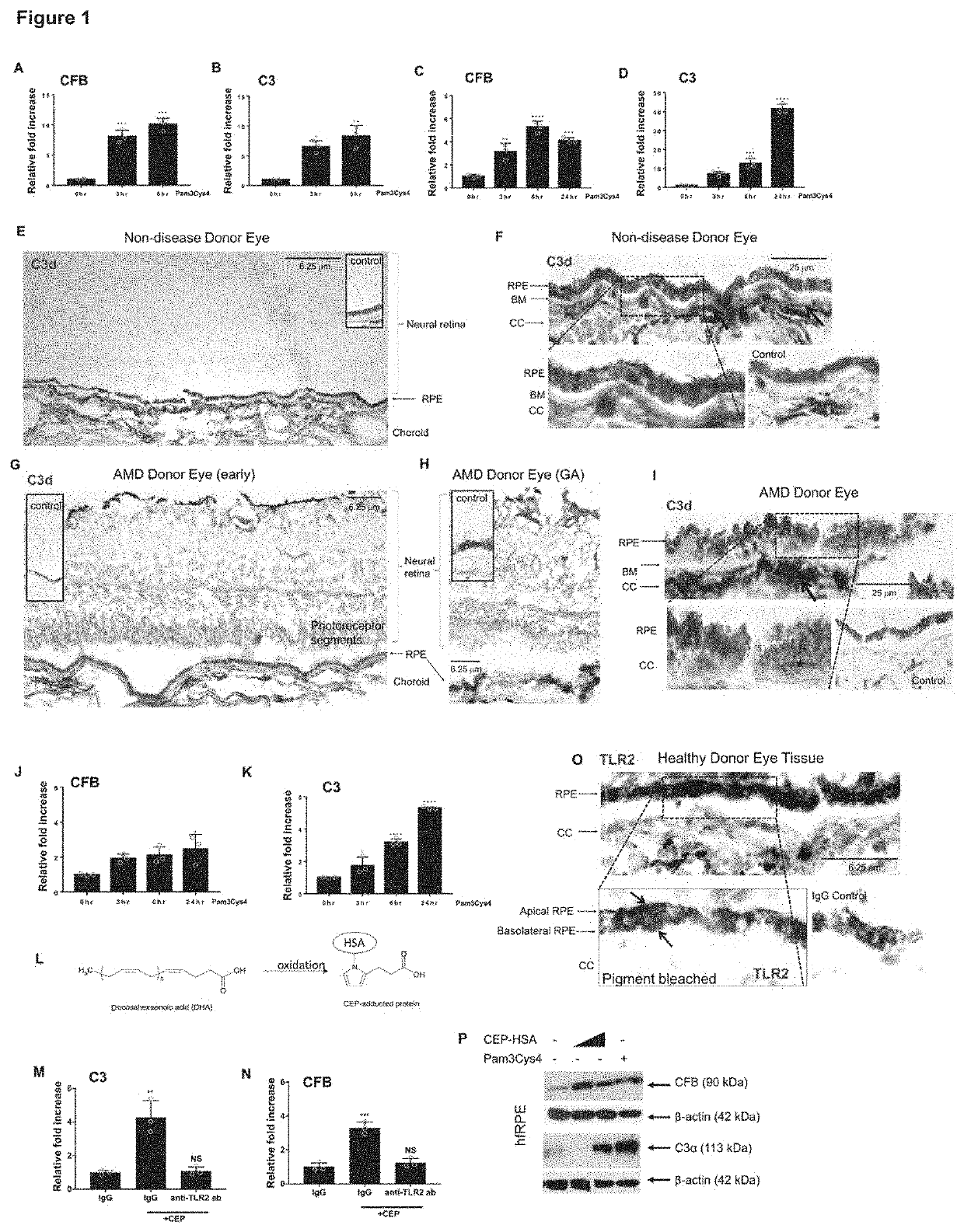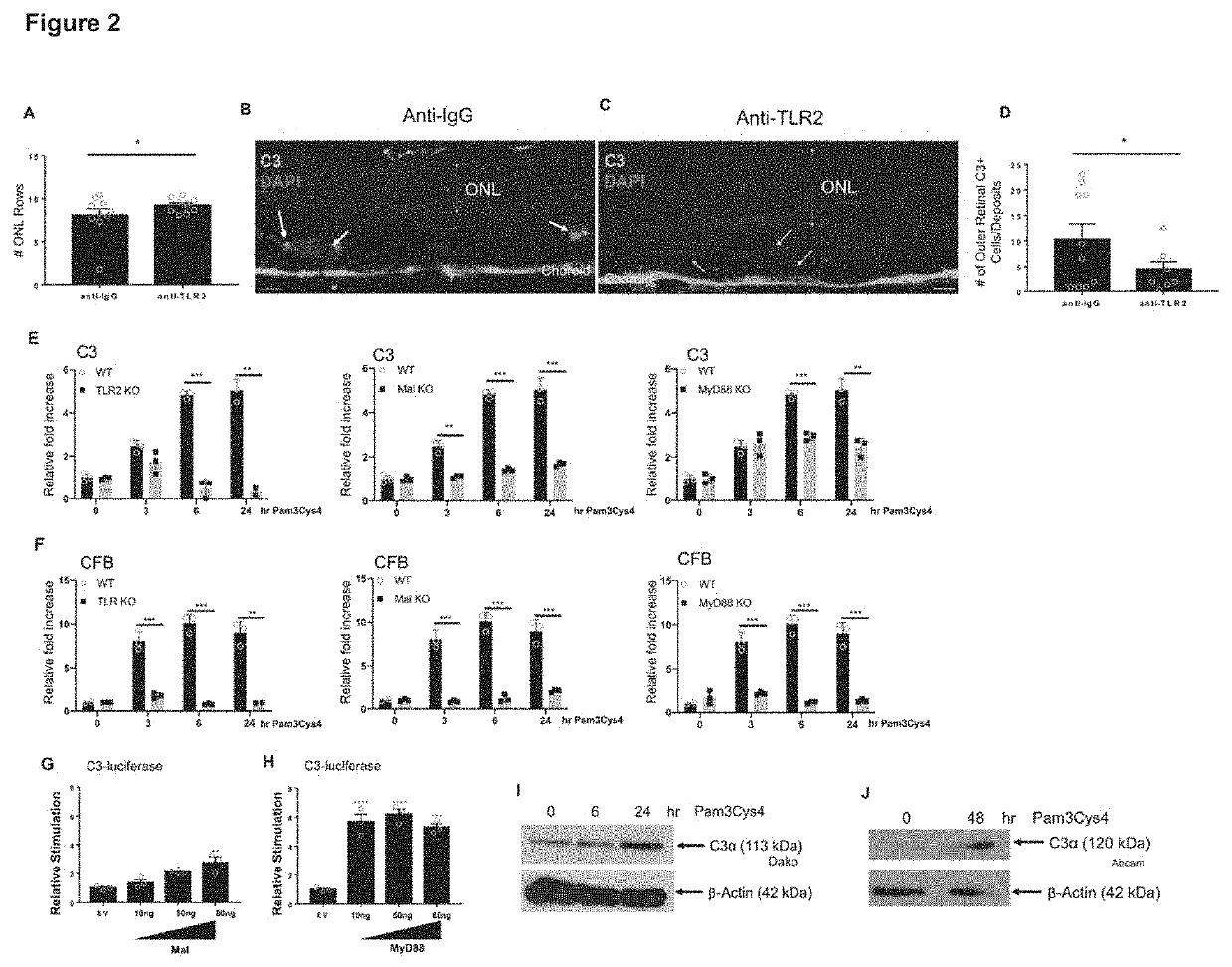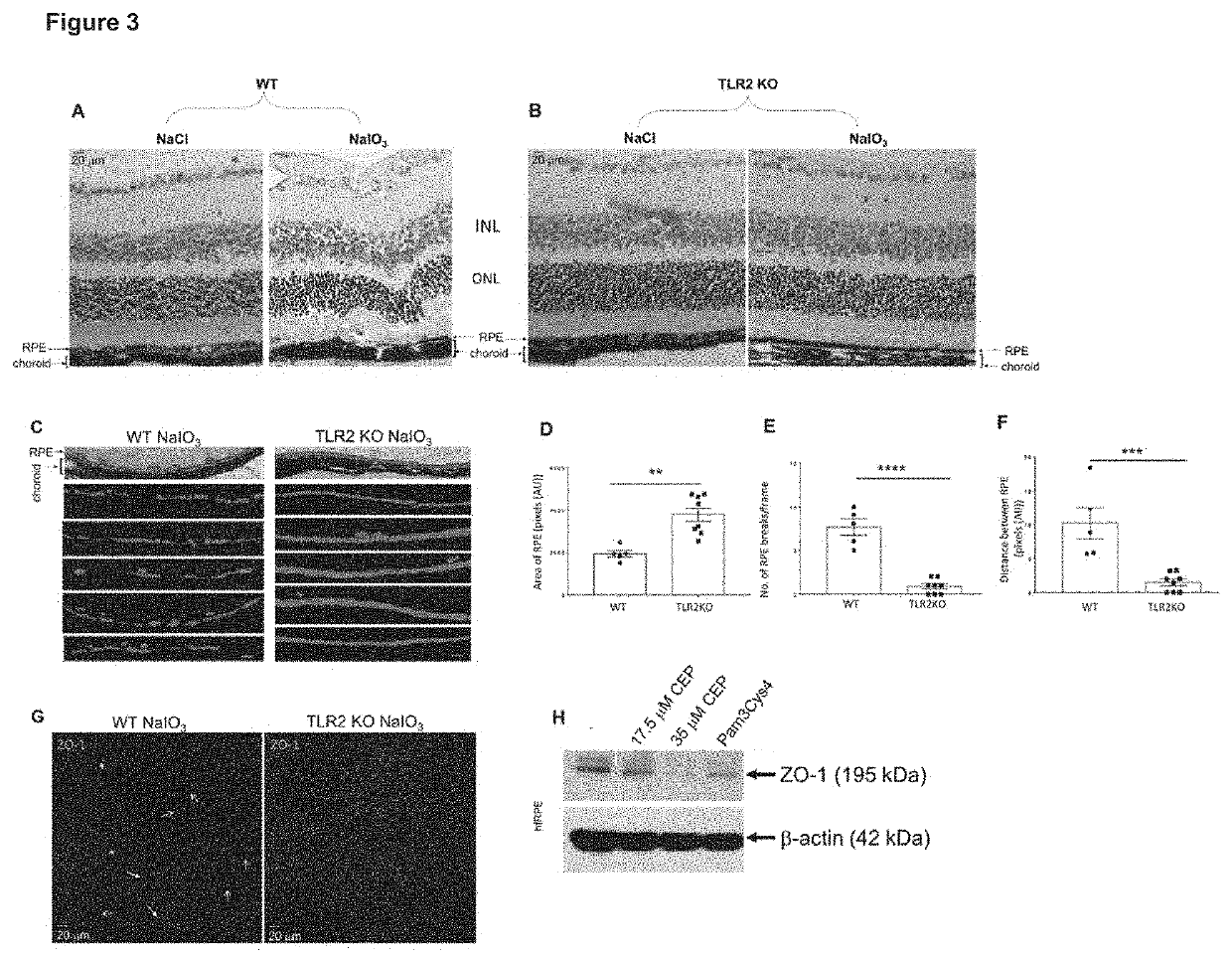Method of treating age-related macular degeneration
a macular degeneration and age-related technology, applied in the field of age-related macular degeneration treatment, can solve the problems of visual impairment, over-activation of the immune system, and contributing to disease pathogenesis
- Summary
- Abstract
- Description
- Claims
- Application Information
AI Technical Summary
Benefits of technology
Problems solved by technology
Method used
Image
Examples
example 2
[0090]AMD-Associated Oxidative Stress Products Induce AP Complement Secretion from hfRPE Cells
[0091]It was next assessed whether a physiologically relevant DAMP generated by oxidative stress could induce the same response in primary human fetal RPE (hfRPE) cells. The retina is one of the most highly metabolically active tissues in the body. This oxidative burden, results in generation of lipid oxidation products such as CEP (FIG. 11). hfRPE cells were incubated with either a neutralizing antibody targeting TLR2 (anti-TLR2) or an IgG control prior to stimulation with CEP-adducted to human serum albumin (CEP-HSA). CEP-HSA induced C3 and CFB transcripts to similar levels observed for Pam3Cys4 in RPE cells and this was inhibited by the presence of anti-TLR2 neutralizing antibodies (FIG. 1m, n). TLR2 localization was assayed in human donor eye tissue and observed both apically and basolaterally in the plasma membrane of the RPE (FIG. 10) Immunoblot analysis demonstrated TLR2 effect on tr...
example 3
Neutralization of TLR2 in a Photo-Oxidative Stress Model of Retinal Degeneration Decreases C3 Deposition and Promotes Survival of Photoreceptor Cells
[0092]Overexpressing C3 in the retina can promote many features of AMD, while inhibiting various complement factors can protect against photoreceptor cell death in models of retinal degeneration. To define a role for TLR2 in bridging oxidative stress to complement activation and assessing its function in retinal degeneration, a well-characterized light-induced photo-oxidative stress model of retinal degeneration was utilized, in which locally produced C3 is known to contribute causally to retinal degeneration. In this model, there is a significant increase in C3+ macrophage / microglia in the photoreceptor layer and a decrease in outer nuclear layer (ONL) thickness. The ONL is made up of the nuclei of the rod and cone photoreceptors, and a decrease in the ONL thickness is indicative of photoreceptor cell death and retinal degeneration. An...
example 4
Inhibiting Amplification of the AP Ameliorates RPE Degeneration in the NaIO3 Model of Retinal Degeneration
[0093]The NaIO3 mouse model of oxidative stress mimics some features of human retinal disease albeit in an acute manner; notably complement deposition, RPE fragmentation and photoreceptor cell degeneration. In vitro, NaIO3 dose dependently induced the expression of TLR2, CFB and C3 in RPE cells (FIG. 10), indicating the potential for activation of both TLR2 pathways and the AP in this model. Although there are potentially many DAMPs that drive TLR activation in response to oxidative damage, the appearance of CEP adducts was tested. FIG. 11 clearly demonstrates presence of CEP lipid oxidation product in the photoreceptor layer (3rd column) in NaIO3 treated animals, when compared to saline and IgG-control sections (1st and 2nd columns). CEP appears strongly in the central retina, with weaker staining in peripheral retina, a phenomena also observed in a high glycemic diet-induced m...
PUM
| Property | Measurement | Unit |
|---|---|---|
| time | aaaaa | aaaaa |
| temperature | aaaaa | aaaaa |
| oxidative stress | aaaaa | aaaaa |
Abstract
Description
Claims
Application Information
 Login to View More
Login to View More - R&D Engineer
- R&D Manager
- IP Professional
- Industry Leading Data Capabilities
- Powerful AI technology
- Patent DNA Extraction
Browse by: Latest US Patents, China's latest patents, Technical Efficacy Thesaurus, Application Domain, Technology Topic, Popular Technical Reports.
© 2024 PatSnap. All rights reserved.Legal|Privacy policy|Modern Slavery Act Transparency Statement|Sitemap|About US| Contact US: help@patsnap.com










